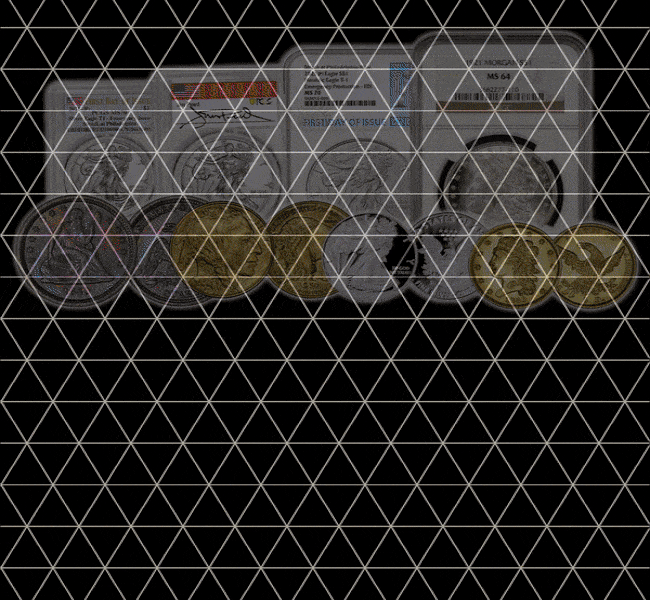By Mike Markowitz for CoinWeek …..
A BRILLIANT ORGANIZER and commander, Marcus Vipsanius Agrippa[1] engineered Octavian’s rise to supreme power in the waning days of the Roman Republic. Agrippa’s two sons with his wife Julia, Octavian’s only daughter, were Gaius Caesar[2] (born 20 BCE) and Lucius Caesar[3] (born 17 BCE). Gaius and Lucius would be adopted by the emperor Octavian (now called “Augustus“) and carefully groomed as his successors (prudent rulers like to have “an heir and a spare”). To honor and publicize this fact, the two young brothers appear side by side on the reverse of a silver denarius, one of the most common, collectible and historic coins of Augustus.
The denarius was a typical day’s pay for a laborer in the first century. Millions were struck in silver that was nearly 99% pure, at a standard of 84 to the 12-ounce Roman pound (329 grams). Well-preserved examples average about 3.8 grams.
Around 15 BCE, the imperial mint moved from Rome to Lugdunum (now Lyon, France), a city that was conveniently located halfway between the silver mines of Spain and the army on the Rhine where the coins paid the legions.
Symbols
Five variants of this coin are distinguished by small symbols.
On the reverse, two overlapping round shields and two spears stand between full-length figures of Gaius and Lucius. Between the spears are a simpulum[4] and a lituus[5]. The lituus is a curved wand, shaped like a “P” or a “q”; the simpulum is a bronze ladle for pouring sacrificial wine, shaped like a “b” or a “d”. These implements indicate the youths are priests of the Roman religion. A small “x”, its meaning unknown, appears below these symbols on some coins.
RIC 207
The obverse bears the head of Augustus surrounded by the Latin inscription CAESAR AVGVSTVS DIVI F PATER PATRIAE. “Caesar”, of course, is the family name of Julius Caesar, Octavian’s adoptive father. “Augustus”, meaning “revered” or “deeply respected”, was a title awarded by the Roman Senate to Octavian; it subsequently became one of the titles of every Roman emperor to follow. “Divi F” means “Son of a god” (Julius Caesar was declared to be divine after his murder), with the “F” being an abbreviation of the word filius (“son”). “Pater Patriae” means “Father of the Country”, another honorary title awarded by the Senate in 2 BCE when Augustus reached the age of 60.
Inscribed below is the abbreviation C L CAESARES, which stands for “Gaius and Lucius Caesars”. Inscribed around is AVGVSTI F COS DESIG PRINC IVVENT, which means “sons of Augustus, designated Consul, and leader of the youth”. Gaius was “designated” as consul in 6 BCE at the age of 15 to assume office at the age of 20 (two consuls serving one-year terms were high government officials). “Princeps Iuventutis” was an honorary title granted to young aristocrats; the silver shields and spears featured on the coin were its insignia.
RIC 208
RIC 208 is a rare “restitution issue” denarius minted decades after the death of Augustus in 14 CE[7]. This was not understood when the coins were cataloged in the 1920s. Some were struck under Domitian (ruled 81-96 CE), while others were struck under Trajan (ruled 98-117 CE).
RIC 210
Less common than RIC 207, RIC 210 was issued from 2 BCE to 12 CE, long after the deaths of Lucius in 2 CE and Gaius in 4 CE. A superb example brought $1,700 USD in a recent auction[8]. Coins that are worn or off-center can sometimes be found for under $100.
RIC 211 and 212
RIC 211[9] and 212[10], distinguished by the small “x” on the reverse, were struck c. 7 or 6 BCE, and are rather scarce.
Collecting the Gaius and Lucius Denarius
Assembling a complete type set of the Gaius and Lucius denarii would be an interesting challenge for an advanced collector, requiring patience and persistence. No more than one or two examples typically appear in a major auction.
* * *
Notes
[1] https://en.wikipedia.org/wiki/Marcus_Vipsanius_Agrippa
[2] https://en.wikipedia.org/wiki/Gaius_Caesar
[3] https://en.wikipedia.org/wiki/Lucius_Caesar
[4] https://en.wikipedia.org/wiki/Simpulum
[5] https://en.wikipedia.org/wiki/Lituus
[6] Leu Numismatik Web Auction 10, December 7, 2019, Lot 1050. Realized CHF 110 (about $111 USD; Estimate: CHF 50).
[7] Roma Numismatics E-sale 66, January 9, 2020, Lot 868. Realized UK£3,000 (about $3,915 USD).
[8] CNG Triton XXIII, January 14, 2020, Lot 647. Realized $1,700 USD (estimate $1,000).
[9] Roma Numismatics Auction XIV, September 21, 2017, Lot 677. Realized £420 (about $569 USD; Estimate: £500).
[10] Roma Numismatics E-sale 71, May 28, 2020, Lot 845. Realized £80 (about $99 USD; Estimate: £100).
References
Foss, Clive. Roman Historical Coins. London (1990)
Kent, J.P.C. Roman Coins. New York (1978)
Stevenson, Seth. Dictionary of Roman Coins. New York (1889, reprint London
1964)
Sutherland, C.H.V. The Roman Imperial Coinage, Volume 1: Augustus – Vitellius. London (1923)
